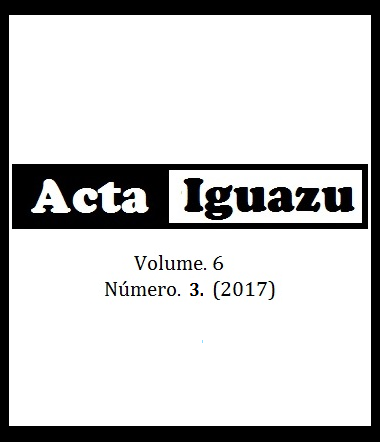PHYSICAL CHARACTERIZATION OF FRUITS AND SEEDS OF JAMBOLAN [SYZYGIUM CUMINI (L.) SKEELS] (MYRTACEAE)
DOI:
https://doi.org/10.48075/actaiguaz.v6i3.16551Palavras-chave:
jambolão, Cerrado, rendimento de polpa.Resumo
The main physical and biometric characteristics of fruits and seeds of Syzygium cumini (L.) Skeels, and correlation estimates between these characteristics were investigate in this study. Mature fruits of S. cumini were collected from ten matrices trees in Marechal Cândido Rondon, Paraná, Brazil. The longitudinal and transversal diameters of 100 fruits and 100 seeds were measured. The mass of fresh and dry matter, water content of fruits and seeds, and pulp yield of the fruits were quantified. Data were analyzed by using descriptive statistics, adjustment of statistical distributions, and Spearman's correlation analysis. The Syzygium cumini (L.) Skeels ("jambolan") presents variation in fruit, pulp and seed mass, which can be explored for breeding projects and should be considered in the formation of seed lots that are more homogeneous. There were significant positive correlations between the fruit pulp yield (FPY) and the fresh fruit mass (FFM), dry fruit mass (DFM) and fruit water content (FWC). The S. cumini fruits present great socioeconomic potential for the food industry in Brazil due to the high pulp yield of the fruits (72.93 ± 7.41%). The high fruit pulp yield can be optimized with the selection of plants with fruits of greater fresh mass or dry mass or water content due to the high degree of association between these characteristics and the pulp yield.
Downloads
Publicado
Como Citar
Edição
Seção
Licença
Aviso de Direito Autoral Creative Commons
Política para Periódicos de Acesso Livre
Autores que publicam nesta revista concordam com os seguintes termos:
1. Autores mantém os direitos autorais e concedem à revista o direito de primeira publicação, com o trabalho simultaneamente licenciado sob a Licença Creative Commons Attribution que permite o compartilhamento do trabalho com reconhecimento da autoria e publicação inicial nesta revista.2. Autores têm autorização para assumir contratos adicionais separadamente, para distribuição não-exclusiva da versão do trabalho publicada nesta revista (ex.: publicar em repositório institucional ou como capítulo de livro), com reconhecimento de autoria e publicação inicial nesta revista.
3. Autores têm permissão e são estimulados a publicar e distribuir seu trabalho online (ex.: em repositórios institucionais ou na sua página pessoal) a qualquer ponto antes ou durante o processo editorial, já que isso pode gerar alterações produtivas, bem como aumentar o impacto e a citação do trabalho publicado (Veja O Efeito do Acesso Livre).
Licença Creative Commons
Esta obra está licenciada com uma Licença Creative Commons Atribuição-NãoComercial-CompartilhaIgual 4.0 Internacional, o que permite compartilhar, copiar, distribuir, exibir, reproduzir, a totalidade ou partes desde que não tenha objetivo comercial e sejam citados os autores e a fonte.


